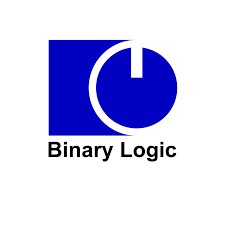What Is Binary Logic?
Category: COMPUTER SCIENCE | 14th March 2024, Thursday

Binary Logic, Often Referred To As Boolean Logic, Is A Fundamental Concept In Computer Science That Deals With The Manipulation And Representation Of Binary Values Using Logical Operations. In This Essay, We Will Explore Binary Logic Comprehensively, Covering Its Historical Context, Theoretical Foundations, Practical Applications, And Its Significance In The Field Of Computer Science.
1. Introduction To Binary Logic
Binary Logic Forms The Foundation Of Digital Electronics And Computer Science. At Its Core, It Involves The Representation Of Data And The Performance Of Logical Operations Using Binary Digits, Or Bits, Which Can Take On One Of Two Possible Values: 0 Or 1. These Binary Values Correspond To The Logical Concepts Of False (0) And True (1), Respectively.
2. Historical Context
The Origins Of Binary Logic Can Be Traced Back To The Mid-19th Century With The Work Of George Boole, An English Mathematician And Philosopher. Boole Developed A System Of Mathematical Logic, Known As Boolean Algebra, Which Laid The Groundwork For Binary Logic. His Seminal Work, "The Laws Of Thought," Published In 1854, Introduced The Concepts Of Logical Operations And Symbolic Representation Of Logical Expressions Using Algebraic Notation.
3. Theoretical Foundations
Binary Logic Is Based On A Set Of Fundamental Operations Known As Boolean Operations Or Logic Gates. These Operations Include AND, OR, NOT, XOR, And NAND, Among Others. Each Operation Takes One Or More Binary Inputs And Produces A Single Binary Output Based On Predefined Logical Rules. Boolean Algebra Provides A Formal Framework For Manipulating Logical Expressions Using These Operations, Enabling The Design And Analysis Of Complex Digital Circuits And Systems.
4. Logic Gates
Logic Gates Are Electronic Circuits That Implement Boolean Operations. They Are The Building Blocks Of Digital Systems And Are Used To Perform Logical Functions Such As AND, OR, And NOT. Each Logic Gate Has One Or More Input Terminals And A Single Output Terminal, And It Operates Based On The Truth Table Associated With Its Specific Function. Common Types Of Logic Gates Include AND Gates, OR Gates, NOT Gates, XOR Gates, And NAND Gates.
5. Practical Applications
Binary Logic Has Numerous Practical Applications Across Various Domains, Including Computer Science, Electronics, Telecommunications, And Information Technology. In Computer Hardware, Binary Logic Is Used To Design And Implement Digital Circuits, Processors, Memory Units, And Other Components Of Computer Systems. In Software Development, Boolean Logic Is Employed In Programming Languages, Algorithms, And Data Structures To Control Program Flow, Make Decisions, And Perform Logical Operations.
6. Digital Circuits
Digital Circuits Are Composed Of Interconnected Logic Gates That Process Binary Data According To Predefined Instructions. These Circuits Are Used To Perform Arithmetic Operations, Control Sequential Logic, And Execute Algorithms In Digital Systems. Examples Of Digital Circuits Include Adders, Multiplexers, Flip-flops, And Counters, Which Are Essential Components Of Computers, Smartphones, And Other Electronic Devices.
7. Binary Representation
Binary Representation Is The Method Used To Encode Data Using Binary Digits. In Computer Systems, Data Is Typically Represented In Binary Format Using A Series Of Bits, Where Each Bit Represents A Binary Value (0 Or 1). Binary Representation Is Used To Store Numbers, Characters, And Other Types Of Information In Memory And On Storage Devices Such As Hard Drives And Solid-state Drives.
8. Boolean Functions
Boolean Functions Are Mathematical Expressions That Describe The Relationship Between One Or More Binary Inputs And A Single Binary Output. These Functions Are Expressed Using Boolean Algebra And Can Be Implemented Using Logic Gates Or Represented As Truth Tables. Boolean Functions Are Used To Model Logical Operations, Define Digital Circuits, And Analyze The Behavior Of Boolean Systems.
9. Logic Design
Logic Design Is The Process Of Designing Digital Circuits And Systems Using Boolean Logic And Logic Gates. It Involves Specifying The Functionality Of A System, Selecting Appropriate Logic Gates, And Interconnecting Them To Achieve The Desired Behavior. Logic Design Encompasses Various Stages, Including Specification, Synthesis, Simulation, And Verification, And It Is Essential For The Development Of Reliable And Efficient Digital Systems.
10. Conclusion
In Conclusion, Binary Logic Is A Fundamental Concept In Computer Science That Underlies The Operation Of Digital Systems. It Provides A Formal Framework For Representing And Manipulating Binary Data Using Logical Operations And Boolean Algebra. Binary Logic Is Essential For The Design, Analysis, And Implementation Of Digital Circuits, Processors, And Software Applications, And It Continues To Play A Central Role In The Advancement Of Computer Technology And Information Processing.
Tags:
Binary Logic, What Is Binary Logic
